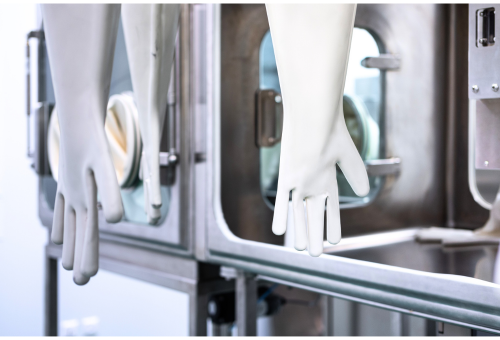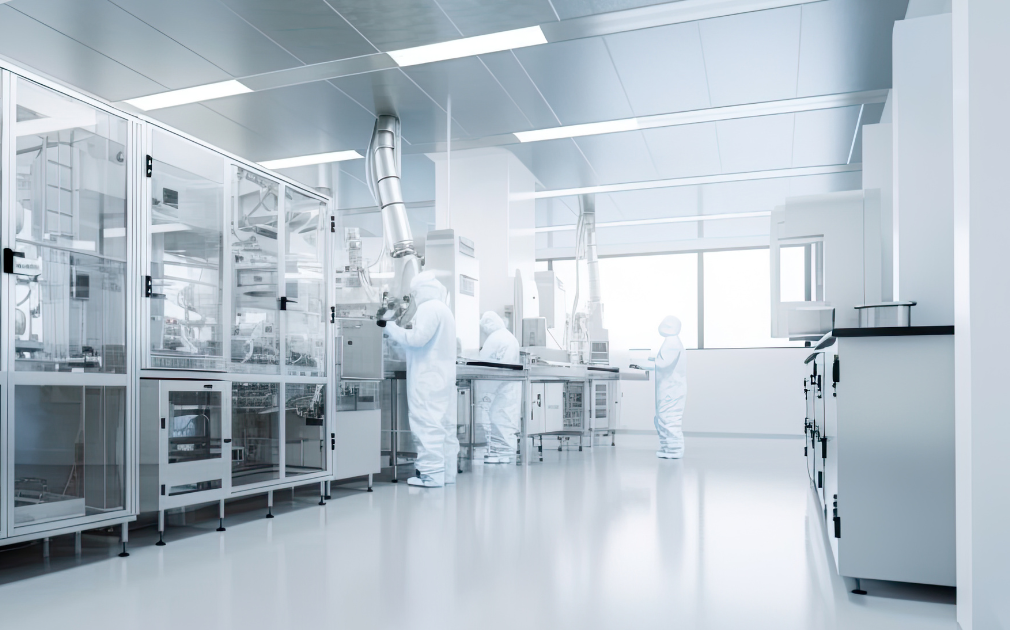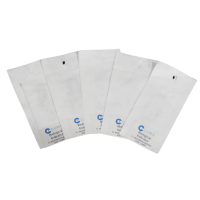5 Ways Low Concentration H2O2 Decon Makes GMP Compliance Easier
In the world of pharmaceutical manufacturing, maintaining GMP/cGMP standards is essential. Facility managers, operations directors, and quality engineers continually face the challenge of optimizing production while ensuring the highest levels of safety and regulatory compliance. While historical high concentration vaporized hydrogen peroxide sterilization methods have been effective, they’ve brought their own challenges with material compatibility, staff safety, and lengthy outgassing.
What if your decontamination method could help you achieve GMP compliance without all the worry?

What is a GMP/cGMP facility?
First, let’s review what it means to be a GMP/cGMP facility. GMP stands for "Good Manufacturing Practices," also known as cGMP or "Current Good Manufacturing Practices." These practices are processes the pharmaceutical industry follows to ensure proper design, monitoring, and control of manufacturing processes. GMP facilities must adhere to these stringent quality standards because they are responsible for manufacturing, storing, and packing drugs or medical devices used in the industry. Sometimes these facilities serve smaller scale production for clinical trial materials. Regardless of facility specifics, contamination at any stage of the process could result in a compromised product, leading to expensive recalls, facility shutdowns, lawsuits, or even sickness or death of an end patient. Avoiding these disastrous outcomes are some of the processes GMP & cGMP are designed to prevent.
How Does Sterilization Support GMP Compliance?
The GMP decontamination, disinfection, and sterilization protocol is derived from an overarching system known as the Contamination Control Strategy (CCS), also outlined in the EU GMP Annex I to ensure the safety and purity of the final product. The CCS outlines specific sterility and particulate levels required for each laboratory, cleanroom, or production space as well as the environmental conditions necessary to prevent microbial growth or cross-contamination between samples. These conditions must be maintained and supported by proper contamination control strategies to ensure product quality is not compromised.
What Level of Efficacy is Required in GMP Facilities for Disinfection Decontamination or Sterilization?
Typically, to ensure a sterilant is viable for use of a GMP facility, it must be able to achieve at least a 6-log reduction of microbial spores proven with Geobacillus stearothermophilus. In some cases, a 4-log reduction of bacterial spores is also acceptable according to the FDA. While a 3-4-log reduction of bacterial and virus is acceptable for low-risk areas, sporicidal efficacy is required for high-risk areas, such as aseptic production spaces where extreme precautions are taken to avoid contamination or outbreaks. Let’s examine the various GMP facility sterilization methods on the market and how CURIS addresses the most common concerns associated with high level disinfection and decontamination.
How Does CURIS’ Low Concentration H2O2 System Make GMP-Compliant Decontamination Easier (and Better)?
-
-
- Better Environmental Health: Until recently, ethylene oxide has been used as one of the methods of sterilization due to its thorough effectiveness, but the EPA and European Union are now calling for limiting its use due to health and environmental concerns. In its stead, many GMP facilities have explored vaporized hydrogen peroxide as the method of choice due to its lack of toxic residue and its natural decomposition into water and oxygen. However, not all hydrogen peroxide decontamination systems are created equally (see below).
- Increased Safety: While effective and better for the environment, high concentration hydrogen peroxide sterilization systems must be constantly monitored, as they pose serious threats of staff from exposure to hazardous levels of vapor and can cause potentially life-threatening damage to lungs, eyes, and skin. Additionally, the latest studies are finding residues from these high concentration sterilants in the finished pharmaceutical product. CURIS’ low concentration, 7% hydrogen peroxide significantly mitigates risks associated with high operational parts per million, virtually eliminating potential dangers of migration from the treatment space, and its safety rating is classified below the HAZMAT level. This is a welcome change for facility managers and safety officers, who can now satisfy both their rigorous CCS/GMP requirements as well as improve risk management processes.

-
- Enhanced Material Compatibility: Sterilization methods with high operating concentrations, measured in parts per million (ppm), such as chlorine dioxide and traditional vaporized hydrogen peroxide, may also degrade materials causing corrosion, rust, pitting, yellowing, and/or brittleness of stainless steel, plastics, and sensitive devices, such as particle counters. In contrast, CURIS’ systems have proven friendly for use on a wide variety of surfaces and equipment including particle counters. This helps free facility managers from the scramble to coordinate unplanned batch interruptions or shutdowns due to compromised equipment.
- Throughput and Outgassing: As you might expect, the more chemical you put into an enclosure, the more and longer it may take to remove it. This is especially true when you consider that high concentrations of hydrogen peroxide may condense out onto a surface, resulting in residual molecules clinging to the enclosure after vapor has been evacuated. This leftover hydrogen peroxide may affect process throughput, so total decontamination cycles may take hours before the environment returns to normal. Meanwhile, studies show cycles run with CURIS’ 7% solution produce minimal outgassing, with faster turnaround and throughput which result in increasing process efficiencies and lead to a higher yield of production.
- Greater Versatility: As good manufacturing practices continue to evolve with revisions to Annex I, production facilities are broadening their considerations for aseptic spaces, extending expectations for sporicidal disinfection and decontamination from barrier environments like isolators and RABS to the cleanrooms that contain them. Many decontamination systems are bulky and created only for one purpose—to treat a single piece of equipment. CURIS offers a truly all-in-one modular system that can treat a single enclosure OR achieve ≥6-log decontamination of a whole room and its equipment, all at the same time.
-
Does CURIS’ Low Concentration System Meet GMP Decontamination Efficacy Requirements?
The above benefits are wonderful, but can CURIS’ low concentration system satisfy sterility levels required by pharmaceutical facilities to comply with GMP and Annex I regulations?
The answer is, yes!  Each CURIS device is EPA-registered and calibrated to achieve a ≥6-log reduction (99.9999%) of bacterial spores contributing to facilities achieving sterility assurance levels within their environments.
Each CURIS device is EPA-registered and calibrated to achieve a ≥6-log reduction (99.9999%) of bacterial spores contributing to facilities achieving sterility assurance levels within their environments.
In fact, CURIS has been validated to achieve a 10-log (99.99999999%) reduction of adenovirus and an 8-log (99.999999%) reduction of norovirus on multiple porous and nonporous surfaces. These high reduction rates prove CURIS has a distinctive advantage in contamination control with hydrogen peroxide.
CURIS System has an array of decontamination devices designed to treat virtually any area within your facility. Want to learn more? Contact Us.